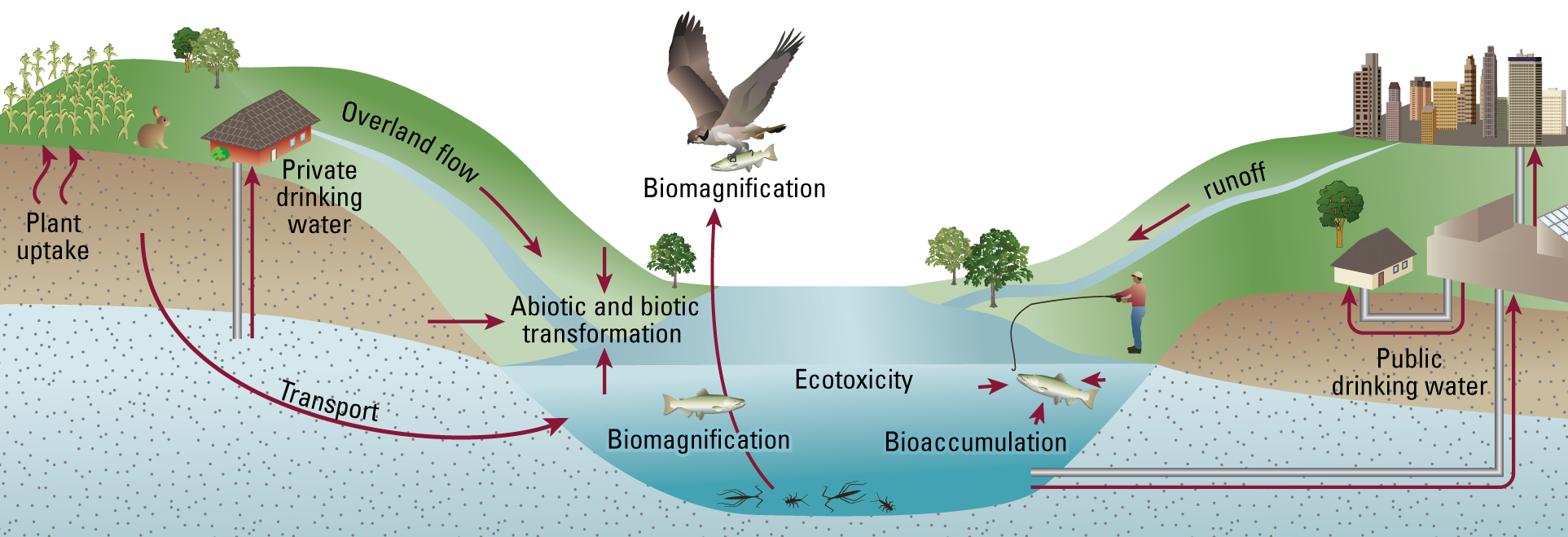2/7/2024
PIs: Jayne Wu (EECS) and Qiang He (CEE)
Funding: US Geological Survey
Project title: Developing a sensor platform for rapid on-site detection of field-relevant levels of pfas in the environment.
Purpose: Per- and poly-fluoroalkyl substances (pfas) have been found in various environmental media, including water, soil, sediment, and air, in both urban and rural areas. Pfas can have detrimental effects on the environment, particularly wildlife, and can also impact human health through the food chain. On-site testing for pfas in environmental media is crucial for understanding the distribution and fate of these chemicals in the environment. This understanding is critical to human health, environmental protection, regulatory compliance, and remediation strategies. Unfortunately, conventional pfas detection methods are laboratory based, time-consuming, and expensive. The researchers propose to develop a point-of-use detection system for on-site sensitive and specific detection of several kinds of pfas in water, plasma, and sediments, which are environmental matrices critical for evaluating pfas exposure and impact. The proposed system builds upon previous successes, i.e., a rapid, sensitive, and specific capacitive sensing platform using nanomaterial molecular capture probes for specific pfas species. The researchers plan to develop and incorporate sample extraction protocols for various environmental matrices, and further validate the developed sensor platform and protocols with established detection methods.
Activities: The proposed on-site pfas sensor will use a unique electroanalytical sensing platform technology developed at the University of Tennessee, Knoxville known as alternating current electrokinetic capacitive (aicap) sensing. The proposed work includes (1) laboratory development and characterization of aicap sensors for pfos, pfoa, and total pfas in spiked water and plasma samples, (2) optimization of sensor protocols for pfas detection in sediment samples, and (3) benchmarking the aicap sensing of field samples against established methods and validating its effectiveness in field use.
Outcomes: The project outcome is expected to be a significant advancement in environmental monitoring and surveying. The proposed pfas detection system is designed to be user-friendly, cost-effective, energy-efficient, and compact, making it ideal for field use. The system targets pfoa, pfos, and total pfas, which are known to be harmful to public health. It is anticipated to detect pfos, pfoa, and total pfas at part-per-trillion levels with high specificity when applied to various types of field samples. Field testing of the system is expected to demonstrate a rapid turnaround time of a few minutes, operated by a lay person. Additionally, the platform can be easily reconfigured for the detection of other pfas targets not yet tested in this project by simply changing the sensor probes. Successful implementation of the proposed system will have a significant impact on protecting public health from pfas exposure.
Beneficiaries: The proposed portable pfas sensing system can provide numerous benefits to the environmental research community, regulators, and the public. A rapid, sensitive, and affordable pfas detection platform can significantly improve the surveillance and monitoring of pfas in the environment, with high temporal and spatial resolutions required for precise mapping, modeling, sourcing, predicting, and subsequent mitigation of pfas pollution and exposure. The system can aid in the characterization and remediation of contaminated sites, which is crucial for protecting human health and the environment. The system’s portability and ease-of-use can enable prompt response to pfas contamination incidents, facilitating timely intervention. Overall, such a portable pfas sensing system can have wide-ranging benefits for environmental monitoring and management, contributing to a more sustainable and healthier future.
